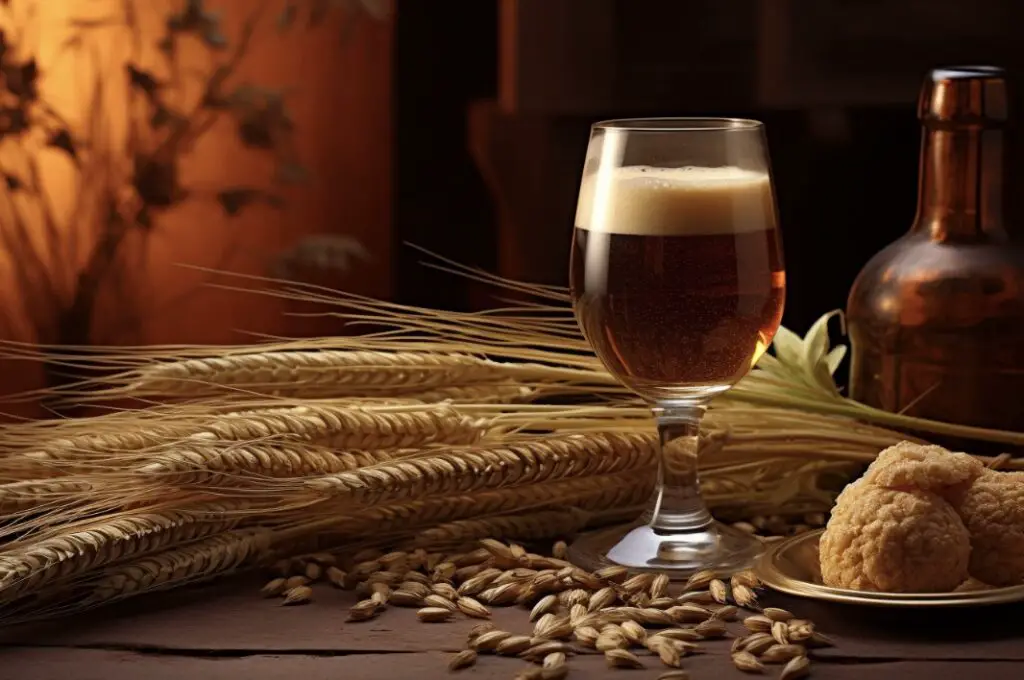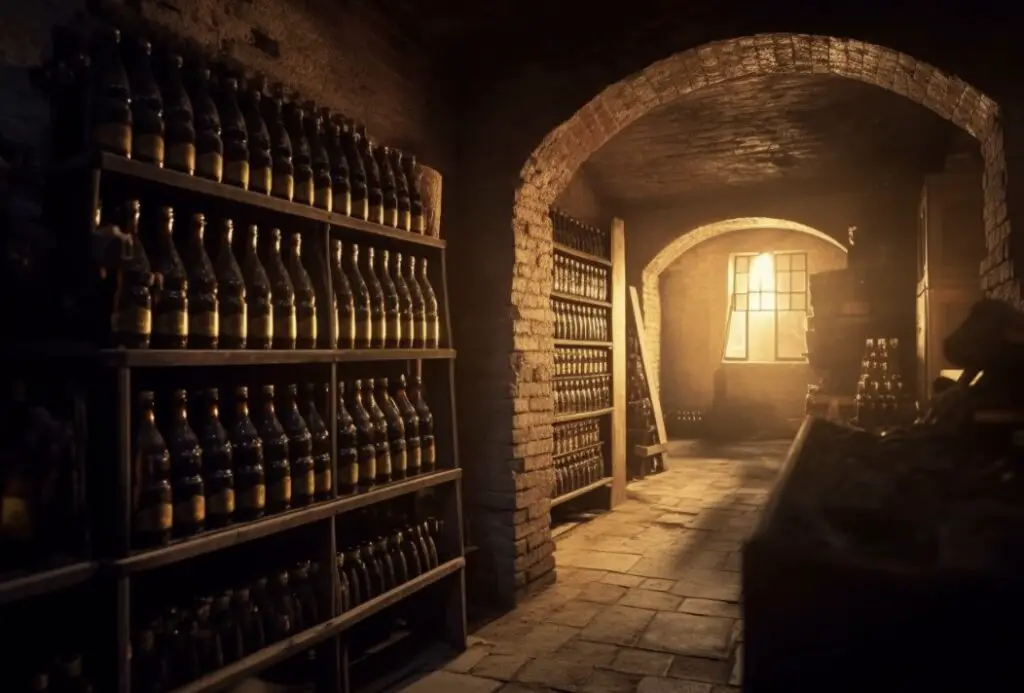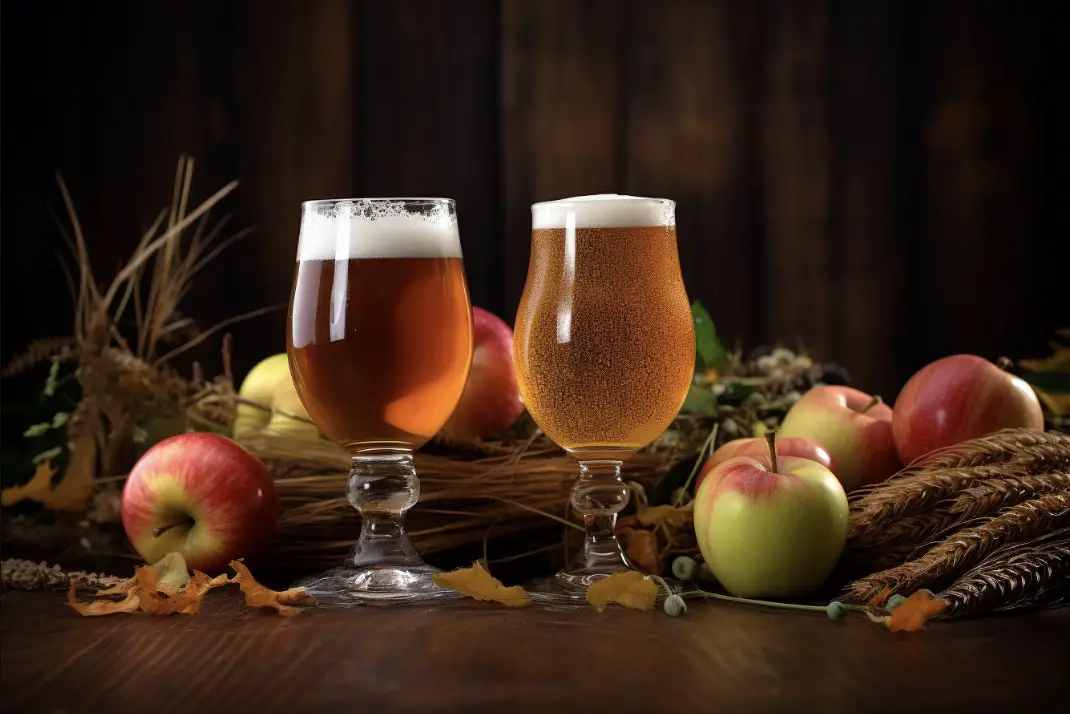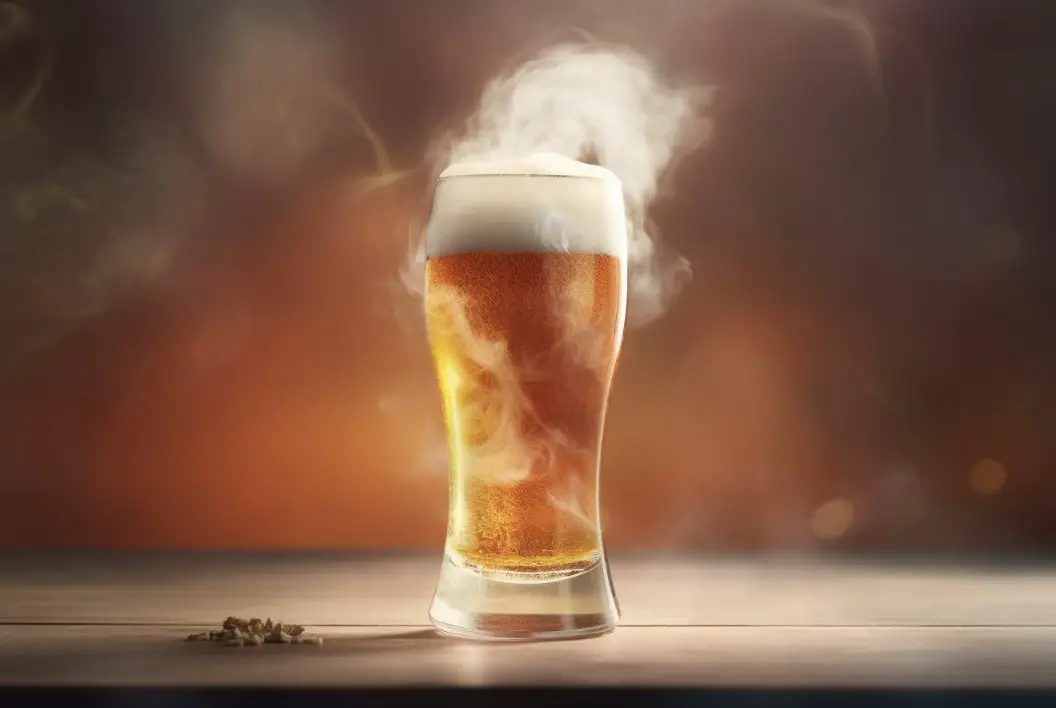Barley wine is a unique and complex style of beer with a rich history and a wide range of flavor profiles, making it a favorite among craft beer enthusiasts.
One important aspect of enjoying barley wine is understanding how to store it properly. As an experienced brewer, I’ve learned firsthand that proper storage can make all the difference in the taste and quality of your barley wine, whether you’re aging it for an extended period or just keeping it on hand for your next special occasion.
In this blog post, I’ll walk you through everything you need to know about storing barley wine, from the ideal temperature and storage conditions to tips on aging and serving. So let’s dive in and explore the world of barley wine storage!
The Basics of Barley Wine
What is Barley Wine?
Barley wine is a strong ale, and not actually a wine, that originated in England and has since gained popularity worldwide. It is characterized by its high alcohol content (typically 8-12% ABV) and complex flavors, which can range from sweet and fruity to bitter and hoppy.

The name “barley wine” comes from the fact that its alcohol content is similar to that of wine, although it is brewed from grain rather than grapes.
Due to its strength and flavor profile, barley wine is often considered a sipping beer and is best enjoyed slowly and thoughtfully.
The Importance of Proper Storage
Like any beer, barley wine is susceptible to the negative effects of heat, light, and oxygen exposure. However, because of its high alcohol content and complex flavors, barley wine is particularly sensitive to these factors. Proper storage is crucial to preserving the taste and quality of your barley wine, and can even enhance its flavors over time if you choose to age it.
Ideal Storage Conditions for Barley Wine
Temperature
The ideal temperature for storing barley wine is between 50 and 60 degrees Fahrenheit (10-15 degrees Celsius). This temperature range helps to slow the aging process and prevents the beer from becoming too warm, which can cause off-flavors and spoilage. If you don’t have access to a specialized beer fridge, a cool, dark basement or cellar is an excellent alternative.

Light
Barley wine should be stored in a dark environment to protect it from exposure to light, which can cause the beer to become “lightstruck” and develop a skunky flavor. Brown glass bottles are better at blocking light than green or clear bottles, but they’re not a perfect solution. Keep your barley wine in a dark place, such as a cupboard or a storage box, and avoid exposing it to direct sunlight or bright indoor lighting.
Humidity
A moderate humidity level of 50-70% is ideal for barley wine storage. High humidity can cause mold growth and damage labels, while low humidity can cause corks to dry out and allow oxygen to enter the bottle. If you’re aging your barley wine for a long period, consider using a humidifier or dehumidifier to maintain the optimal humidity level.
Orientation
Barley wine bottles with crown caps should be stored upright, while those with corks should be stored horizontally. Storing corked bottles horizontally keeps the cork moist and prevents it from shrinking, which can lead to oxidation and spoilage. Crown capped bottles, on the other hand, can be stored upright without any issues.
Aging Barley Wine
When to Age Barley Wine
Not all barley wines benefit from aging, but many will develop new and interesting flavors over time. As a general rule, higher ABV, malt-forward barley wines are the best candidates for aging, while lower ABV and hop-heavy barley wines are best enjoyed fresh.
If you’re unsure whether your barley wine will improve with age, consult the brewer’s recommendations or do some research online.
How Long to Age Barley Wine
The optimal aging time for barley wine will depend on the specific beer and your personal preferences. Some barley wines can be aged for several years or even decades, while others may only need a few months to reach their peak. It’s a good idea to periodically taste your aging barley wine to determine when it has reached your desired flavor profile. Remember, aging beer is an art, not a science – don’t be afraid to experiment!
Serving Barley Wine
Glassware for Barley Wine
Barley wine should be served in a snifter or tulip glass to help concentrate the aromas and enhance the sipping experience. These types of glasses have a wide bowl and a narrow opening, which allows you to fully appreciate the complex flavors and aromas of your barley wine.
Temperature to serve Barley Wine
When it’s time to enjoy your barley wine, take it out of storage and allow it to warm up slightly before serving. The ideal serving temperature for barley wine is around 55-60 degrees Fahrenheit (13-16 degrees Celsius). Serving your barley wine too cold can mute the flavors and aromas, while serving it too warm can cause the alcohol to become overpowering.
Conclusion
Storing barley wine properly is essential for preserving its quality and enhancing its flavors over time. By following the tips and guidelines outlined in this post, you can ensure that your barley wine remains in peak condition, whether you’re aging it for years or simply keeping it on hand for your next special occasion.
To recap, here are 10 key facts about storing barley wine:
1. Proper storage is crucial for maintaining barley wine’s taste and quality.
2. The ideal storage temperature is between 50 and 60 degrees Fahrenheit.
3. Barley wine should be stored in a dark environment to protect it from light exposure.
4. Maintain a humidity level of 50-70% for optimal storage conditions.
5. Store crown cap bottles upright and corked bottles horizontally.
6. Higher ABV, malt-forward barley wines are the best candidates for aging.
7. Aging times can vary from a few months to several years or even decades.
8. Periodically taste your aging barley wine to determine its optimal flavor profile.
9. Serve barley wine in a snifter or tulip glass at a temperature of 55-60 degrees Fahrenheit.
10. Remember that aging beer is an art – don’t be afraid to experiment and find your own preferences.
FAQs
Do you refrigerate Barleywine?
Yes, it is generally recommended to refrigerate Barleywine. Refrigeration helps to slow down the aging process and preserve the flavors and aromas of the beer. Additionally, the cool temperature can help prevent any potential spoilage or off-flavors from developing.
Does Barleywine get better with age?
Yes, Barleywine generally improves with age. The high alcohol content and complex flavors of Barleywine allow it to develop and mellow over time, resulting in a smoother and more harmonious taste profile.
What temperature should Barleywine be served at?
Barleywine is typically best served at a temperature range of 50-55°F (10-13°C). This allows the complex flavors and aromas to be fully appreciated without being overwhelmed by excessive warmth or coldness.
Which beer improves most with age?
Some beer styles tend to improve with age due to their complex flavors and higher alcohol content. Strong ales, such as barleywines and imperial stouts, often benefit from aging as the flavors mellow and develop over time. These beers can exhibit more nuanced characteristics like caramel, toffee, dark fruits, and rich maltiness as they mature. However, it’s important to note that not all beers are meant to be aged, and freshness is crucial for most beer styles.
Can you cellar Barleywine?
Yes, you can cellar Barleywine. In fact, it is often recommended to age Barleywine to allow its flavors to develop and mellow over time. The high alcohol content and complex malt character of Barleywine make it suitable for long-term aging. When properly stored in a cool, dark place, Barleywine can continue to evolve and improve for several years, resulting in a smoother and more refined drinking experience.
How do you store Barleywine?
Barleywine should be stored in a cool, dark place at a consistent temperature, ideally between 50-55°F (10-13°C). It is best to store it upright to minimize oxidation and prevent the yeast sediment from settling at the bottom. Additionally, ensure that the bottles are kept away from light, heat, and strong odors. Proper storage conditions will help preserve the flavors and aromas of the beer over time.




